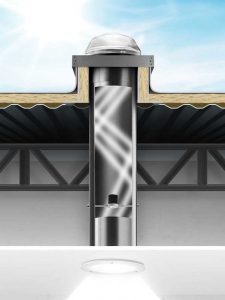
For this project, a daylighting software was used to determine the newly arranged outputs. The design calculator is a web-based daylighting tool designed to help users evaluate daylighting solutions faster and accurately, and it is easily accessible. By combining the product photometry with typical meteorological year (TMY) data, the tool measured the distribution of light from a product based on actual weather at a specific project site. This allowed for the project to move forward by minimizing the time it takes to perform a comprehensive analysis.
Poon and his team determined the exhibit would require 13 devices, all directing light to different targeted areas in the building below.
Conclusion
In September 2021, the long-awaited exhibit reopened to eager visitors. Walking up the large glass observatory windows, viewers are now presented with a jungle-like interior; the meticulous details of the construction are tucked out of sight. For Nakel and Berani, the stars of the attraction, their new home has been warmly received. Since the relocation into their new enclosures, the pair have thrived in the cultivated conditions reminiscent of their native Indonesian habitat.
By including an optional thermal insulation panel, dual pane clear windows, which enhanced the thermal performance, the renovation proved a true success for Poon and Murphy.
“We can control all the lighting, temperature, humidity, and ventilation conditions throughout the Komodo spaces, so we can effectively manage the environment to meet the needs of Nakel and Berani,” says Murphy. “As the science of animal care continues to evolve, we strive to continue to learn, change, and improve, so all our animals receive the best possible care throughout their lives.



 Author
Author
